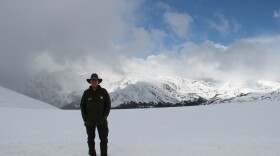Since 2013, researchers have been traveling around the nation’s oil and gas fields, measuring leaks of methane, a potent greenhouse gas.
In Colorado, they’ve taken measurements in the Denver-Julesberg Basin and in the Four Corners, where large quantities of methane were first detected by satellites. They’ve been using their findings to calculate just how much of the climate-warming gas is escaping from oil and gas basins nationwide.
There might be a problem, though. A researcher who developed methane-sensing technology has said he believes an instrument used in a certain type of backpack-sized methane-measuring sensor is flawed. He published a paper outlining his concerns August 4, in the peer-reviewed journal Energy Science and Technology.
The New York Times reported on the issue:
The problem, according to the author of the paper, Touché Howard, is that the backpack-size tool uses two sensors: one for low levels of methane emissions and one for higher levels. As methane levels rise beyond the capacity of the first sensor, the device hands off to the second, high-level sensor. Mr. Howard found that under some conditions, unless the sampler is carefully and frequently recalibrated the switchover from the first sampler to the second can fail. When that occurs, the device does not measure the amount of methane that the second sensor would capture, and so it underrecords methane leakage rates.
If this is the case, it’s possible that studies using this type of measurement may be underestimating the amount of methane leaking from oil and gas fields.
It’s important to note that not all studies of methane leaks have used this measurement device. Some use sensors on airplanes, and the methane leaks in the Four Corners area were first discovered by satellite,then later measured from aircraft.
The lead author of a well-known methane study out of the University of Texas, organized by the Environmental Defense Fund, told the Times he stood by his past work, saying he tested instruments multiple times and used multiple instruments.
Future studies by the National Oceanic and Atmospheric Administration will compare aircraft measurements with those on the ground, which could be one way to determine if ground level measurements are accurate.








